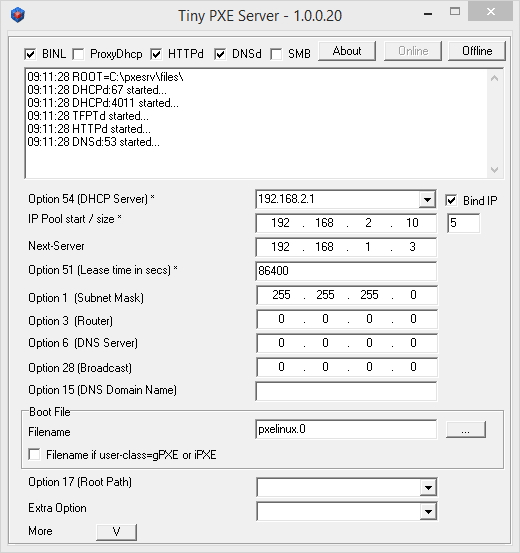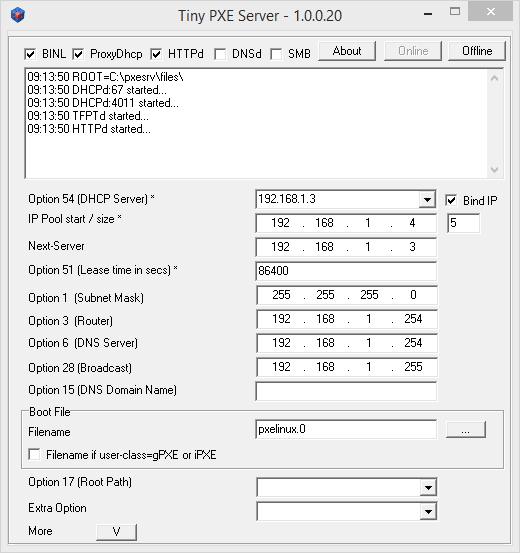

Two systems were used to test the methods covered in this document -
On both test setups Tiny PXE Server was running from the following path - C:\pxesrv\pxesrv.exe. All Network Bootstrap Programs and Operating System files/images were located in the path/directory C:\pxesrv\files\.
The firewall was disabled during tests to rule out any firewall configuration issues.
The DHCP setup consisted of two laptops connected with a CAT 5e crossover cable. The Server laptop was configured as follows -

The majority of the operating systems were tested with the following settings in config.ini (filename=pxelinux.0 edited as required to test the different Network Bootstrap Programs used in this guide) -
Note that a number of the above settings may not be required for all operating systems - the HTTP daemon for example is not used with PXELINUX, BINL is only required for RIS installations of Windows, etc. Enabling these options however does not appear to have any adverse consequences.
GUI when started with the above settings in config.ini -

The ProxyDHCP setup consisted of a client PC (a laptop) and a Server (a desktop). The Server was connected to an ADSL router with a built in DHCP Server - hence the need for a ProxyDHCP service.
As the majority of settings were configured via the routers built in DHCP server, the settings in config.ini were limited to the following -
Note that a number of the above settings may not be required for all operating systems - the HTTP daemon for example is not used with PXELINUX, BINL is only required for RIS installations of Windows, etc. Enabling these options however does not appear to have any adverse consequences.
GUI when started with the above settings in config.ini -

Document date - 28th February 2017(DRAFT)